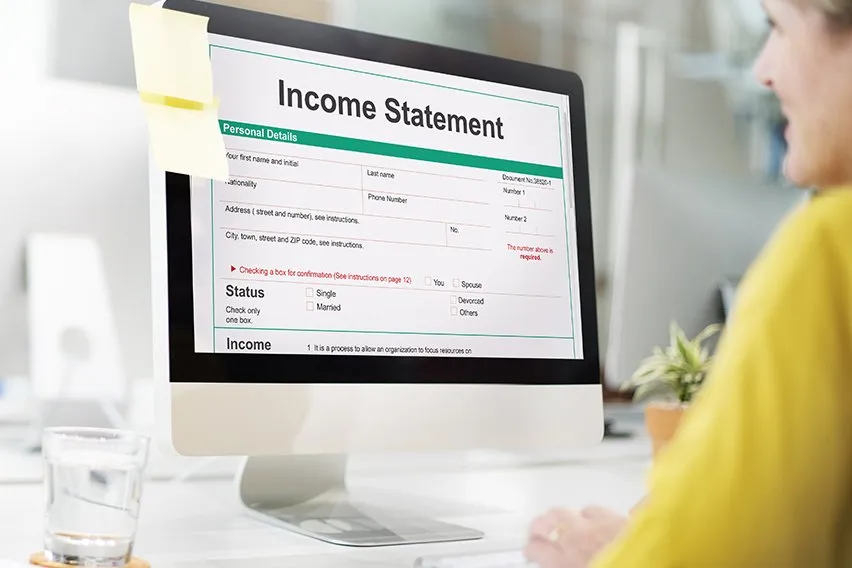Single-Step vs Multi-Step Income Statement: Key Differences for Small Business Accounting

Small businesses have two reporting options when preparing an income statement: you can create a single-step income statement or a multi-step income statement. The format you choose depends on the type of business you own and the ultimate purpose of the income statement you’re creating. Both single-step and multi-step income statements report on the revenues, expenses and the profit or loss of a business during a specific reporting period.
A single-step income statement offers a simple report of a business’s profit, using a single equation to calculate net income. A multi-step income statement, on the other hand, separates operational revenues and expenses from non-operational ones and follows a three-step process to calculate net income. Income statements, also called profit and loss statements, are one of the major financial statements prepared by businesses.
Explore these topics to discover the key differences between a single-step vs multi-step income statement:
What’s a Single-Step Income Statement?
What’s a Multi-Step Income Statement?
Single-Step vs Multi-Step Income Statement
Single-Step Income Statement Example
Multi-Step-Income Statement Example
Should I Prepare a Single-Step or Multi-Step Income Statement?

What’s a Single-Step Income Statement?
A single-step income statement presents the revenue, expenses and ultimately the profit or loss generated by a business, but it reports on this information by using just one equation to calculate profits. The equation used in a single-step income statement is:
Net Income = (Revenues + Gains) – (Expenses + Losses)
The single-step income statement offers a straightforward accounting of the financial activity of your business. It’s easy to understand and relatively easy to prepare.
What’s a Multi-Step Income Statement?
A multi-step income statement reports much of the same general information included in a single-step income statement, but it uses multiple equations to determine the net income, or profit, of the company.
The multi-step income statement breaks down operating revenues and operating expenses versus non-operating revenues and non-operating expenses. This separates revenues and expenses that are directly related to the business’s operations from those that are not directly tied to its operations.
The multi-step income statement uses three different accounting formulas to arrive at the net income:
Step 1: Calculate Gross Profit
Cost of goods sold is subtracted from net sales. This gives the gross profit:
Gross Profit = Net Sales – Cost of Goods Sold
Step 2: Calculate Operating Income
Operating expenses are subtracted from gross profit. This gives you the operating income:
Operating Income = Gross Profit – Operating Expenses
Step 3: Calculate Net Income
Operating income is added to the net non-operating revenues, gains, expenses, and losses. This final figure gives the net income or net loss of the business for the reporting period:
Net Income = Operating Income + Non-operating Items

Single-Step vs Multi-Step Income Statement
A single-step income statement gives a simple accounting of a business’s net income, whereas a multi-step income statement follows a three-step process to calculate net income, separating operational from non-operational revenues and expenses.
Advantages of Single-Step Income Statements
- Easy to Prepare: Because single-step income statements require you to make fewer calculations and because they don’t break down operating versus non-operating line items, single-step reports take less time and effort to prepare.
- Easy to Read: The single-step income statement is a streamlined document. It focuses on the bottom line, net income, so it’s easy to see at a glance how well the business is performing financially.
Advantages of Multi-Step Income Statements
- Offer Greater Detail: Multi-step income statements offer an itemized breakdown of a business’s revenue and expenses, categorized by operating and non-operating revenue for more insight into the financial health of the company.
- Report Gross Profit: Unlike a single-step income statement, multi-step income statements report on gross profit. Gross profit is an important metric because it shows how efficiently a business uses labor and supplies to generate revenue.
- Report Operating Income: Multi-step income statements report on a company’s operating income, which gives insight into how efficiently a company earns a profit from its primary business activities.
Single-Step Income Statement Example
This example of a single-step income statement prepared by Accounting Coach gives you a better understanding of the data reported on a single-step income statement and how it’s presented in the final report:

Multi-Step Income Statement Example
The below sample multi-step income statement from Accounting Coach shows the greater detail reported on a multi-step income statement and how the final report is laid out:

Should I Prepare a Single-Step or Multi-Step Income Statement?
Small businesses with a simple operating structure, including sole-proprietorships and partnerships, can choose between creating single-step or multi-step income statements.
Single-step income statements are easier to prepare and require less calculations. For many small businesses, the single-step income statement provides all the details you’ll need to assess the financial health of your company.
However, if your small business is seeking a bank loan or looking to attract new investment, a multi-step income statement is the best option as it gives potential creditors and investors greater financial detail about your business, which can help them assess its long-term viability.
RELATED ARTICLES

 Business Budget: How to Create It in 6 Simple Steps
Business Budget: How to Create It in 6 Simple Steps 7 Questions About How Accounts Receivable Financing Works
7 Questions About How Accounts Receivable Financing Works What Is the Cost Recovery Method? With Definitions and Examples
What Is the Cost Recovery Method? With Definitions and Examples Job Costing: What It Is & How To Calculate It
Job Costing: What It Is & How To Calculate It Overhead Cost: Definition, Types, and Examples
Overhead Cost: Definition, Types, and Examples Small Business Accounting 101: A 10-Step Guide for Financial Success
Small Business Accounting 101: A 10-Step Guide for Financial Success